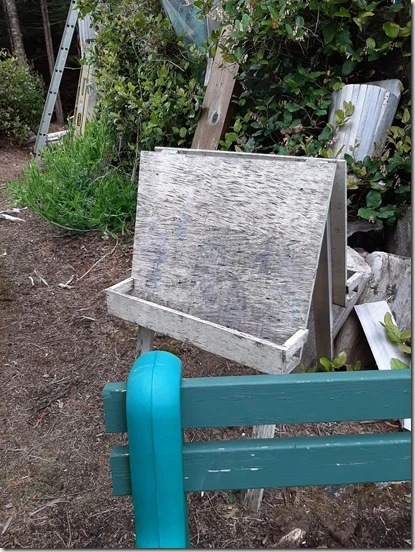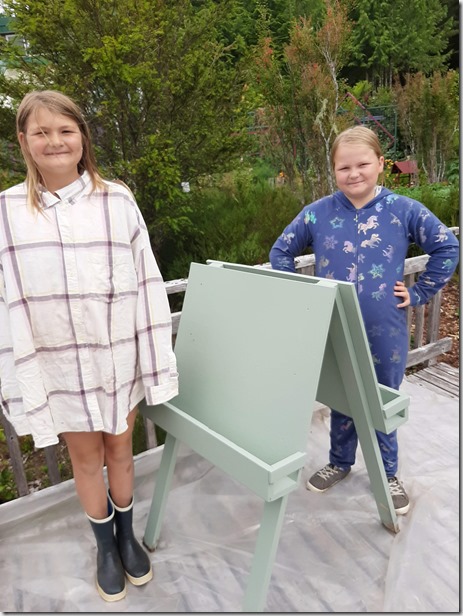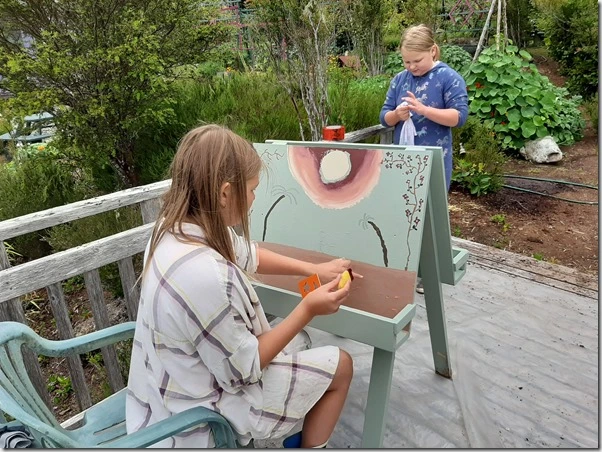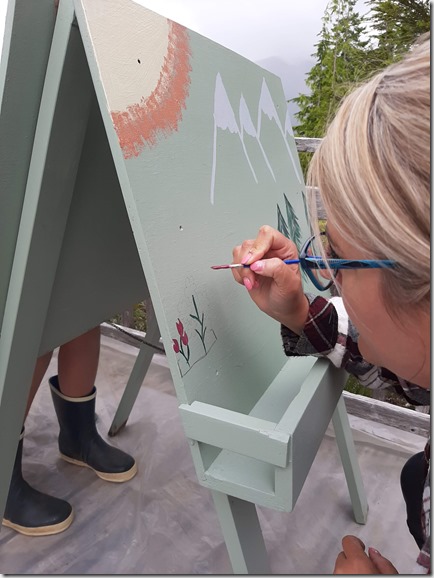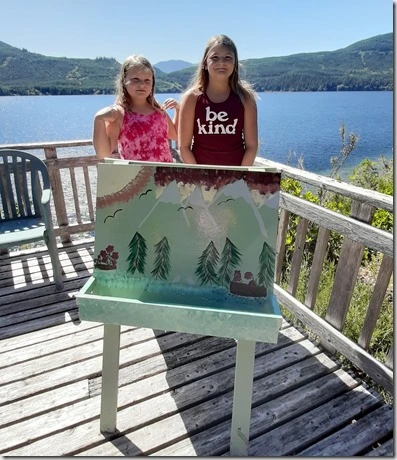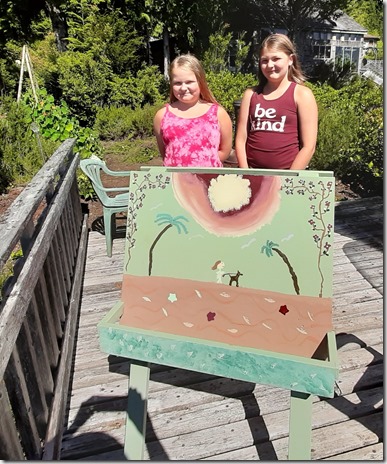It is all about story … what else is there?
You can bet that old, battered easel found at the recycling yard has a story. Of course it does.
Stories surround us. We are immersed in them, swimming in an endless sea of story. At any given time, we seem capable of simultaneously tuning our attention to multiple stories. The lay across our palms, mixed threads of weight, colour and style. Some grab us with their vibrancy, others drift along cloudlike in a clear blue sky, some hold us in an iron grip and still others are dippable – in and out we go.
When it comes to fiction, I’ve never been good at reading more than one novel at a time. But switch up the delivery methods and I’m quite comfortable holding several strands of story in my palm. I am happy to read one novel on my Kindle, listen to another on Aubible and follow a fiction series on Netflix – no problem.
Currently the situation is as follows:
1. Reading Hilary Mantel’s novel, The Mirror and the Light on my Kindle. This is the 3rd book in her highly acclaimed Tudor series in which she takes Thomas Cromwell as her main character and teller of the tale. I read the 1st book, Wolf Hall, several years ago and loved it, then recently finished the 2nd, Bring Up the Bodies. I’m surprised it has taken me this long to get back to Henry VIII and Tudor England.
2. Listening to, A Fine Balance by Rohinton Mistry on Audible. I read the book ages ago. Hearing it read by a narrator who has all the accents and pronunciations bang on is a totally different experience. Highly entertaining and totally gripping. The place is India, an unknown city by the sea, the time is 1975, a state of emergency throws four strangers together. “An enduring panorama of the human spirit in an inhuman state.”
3. Watching Borgen on Netflix. Take my word for it, you get used to the dubbing. Borgen is a political/newsroom drama set in Denmark. The two main characters are Denmark’s Prime Minister and the anchor of the country’s major TV broadcaster – both women. The drama circles around the major events of the day and the personal lives of these women.
Story is not confined to fiction. On any given day, I am listening to stories told to me over the phone by my daughter as she commutes to and from work – the three things granddaughter Emma would do if she was Prime Minister (my heart was warmed by her top priority – give millions to the homeless, followed by cancel school because it’s mostly boring); granddaughter Brit’s outfit for teacher day; and the trials and tribulations of the work life during Covid.
I tune into the latest story told by my son. His Covid hobby is creating heavy metal mixed cassette tapes complete with artwork for the tapes themselves, the liner notes and slip covers. These get distributed amongst a network of enthusiasts and garage metal bands.
I get a text from one of my granddaughters giving me the merest fragment of story – When did my mom start figure skating? I’m going to write a biography of her. Hmmm …. interesting. That request sent me scrambling down memory lane. Another day it was – How do you make peanut butter icing, Grama? Well, you make some icing, and you whip in some peanut butter. Easy peasy!
There are snippets of stories on Facebook and Instagram – photos and quotes and startling revelations. Now and then, a long newsy email arrives from a friend. These are replete with story upon story stacked up like the yummiest layer cake you’ll ever dig your fork into. Multiple story threads emerge in every news and political podcast that dumps daily into my podcast app.
Through casual conversations, stories pop up right, left and center. A simple question, “What are you doing?” can lead to multiple stories. Some you want to hear, some you certainly don’t. But you get what you get and don’t get upset – as my granddaughters learned in Kindergarten.
As I said, literally swimming in story here! Story is a deep stream running through our lives, so deep and rich that if we had the inclination, we would never run out of things to write about. And in our telling, we create another layer – like an office tower – one story on top of the other reaching higher and higher, always with elaborate stairways and elevators to gain access between floors.
Did you pick up a story from the photos? Or did they simply confuse the story conveyed in the written text? Could you hold the multiple strands of story? Hope so!
How are you drifting down the stream of story today? Where are you hearing the snippets, the gripping tales, the startling headlines? I’m all ears for a good story.
